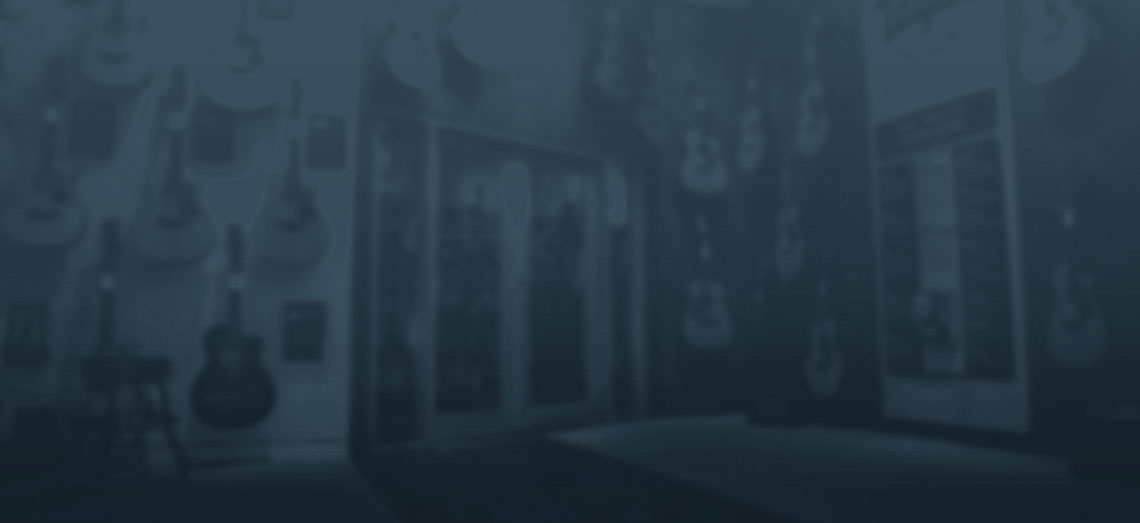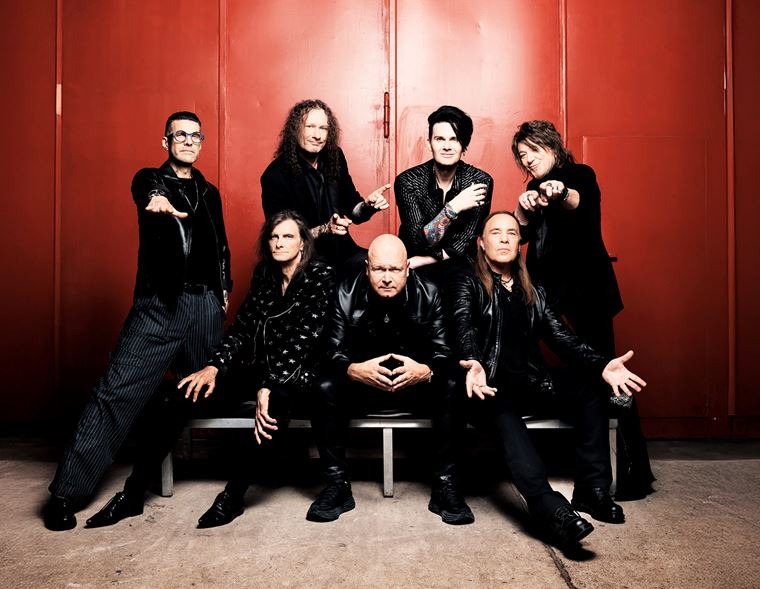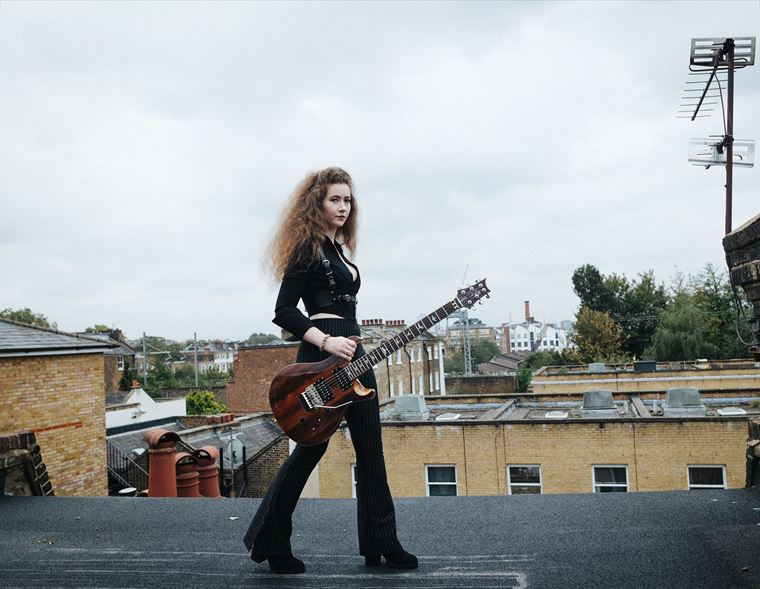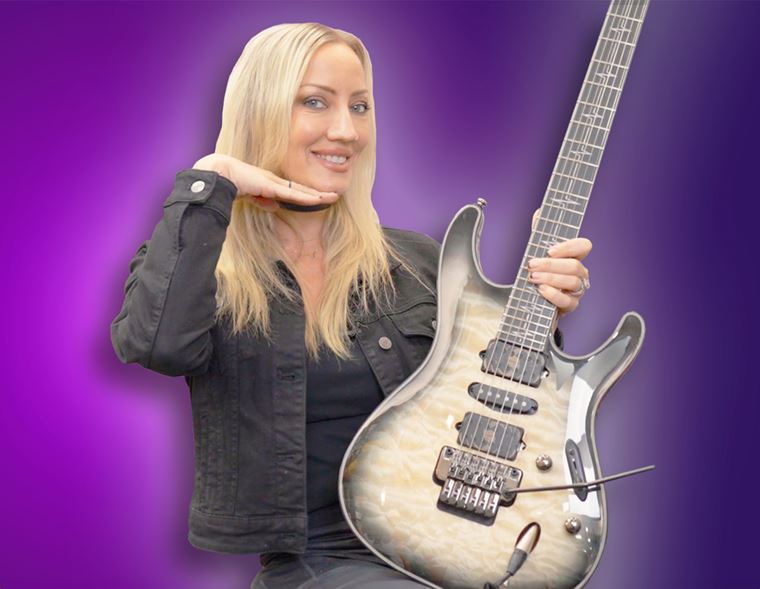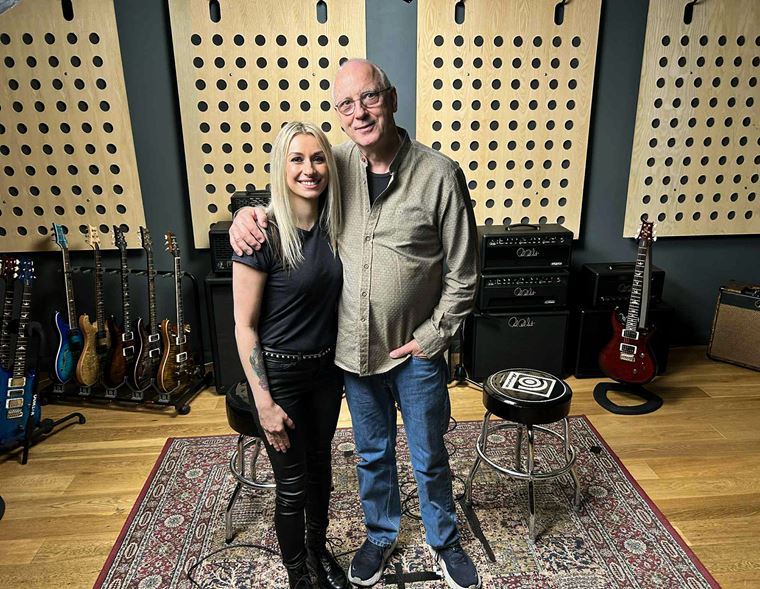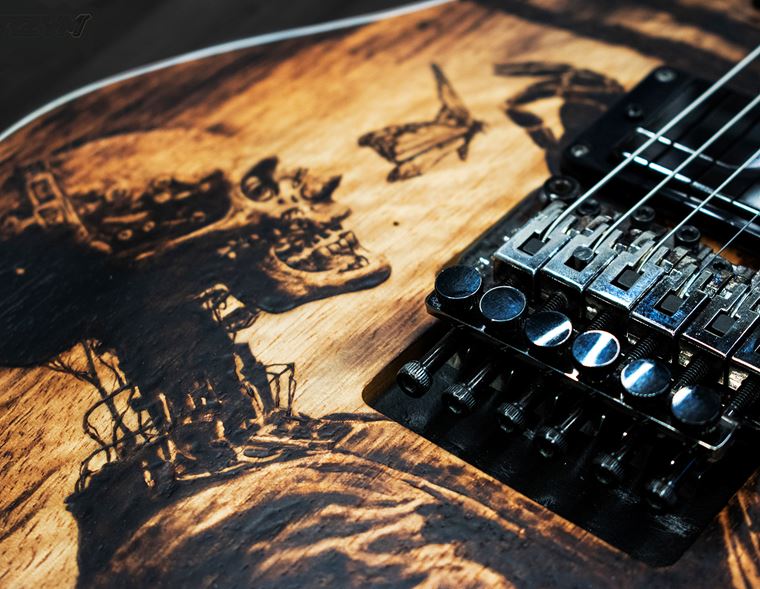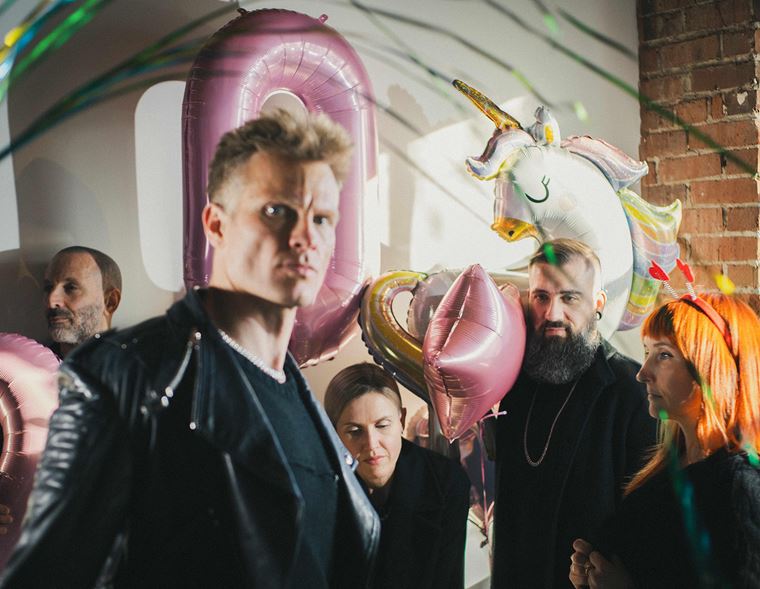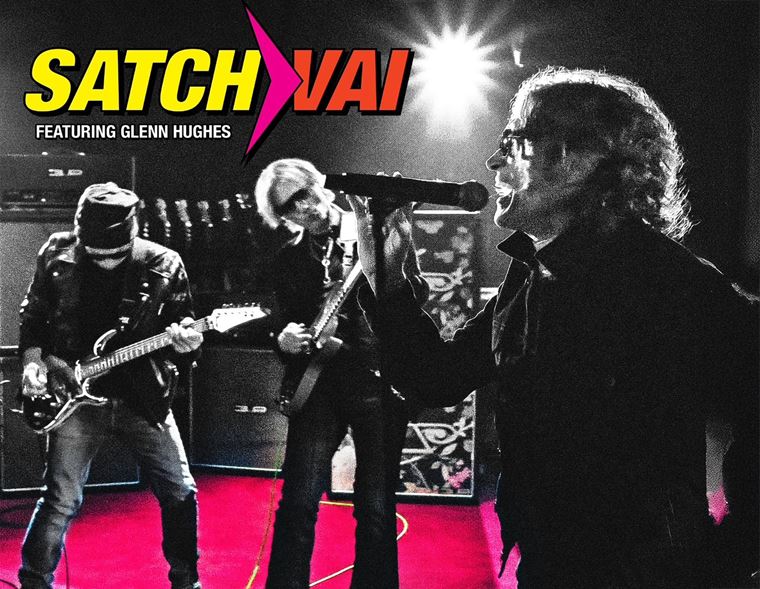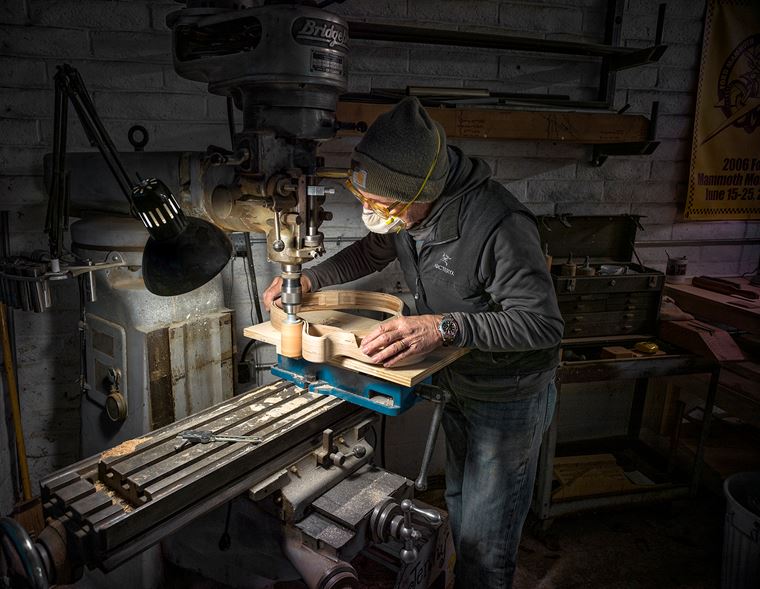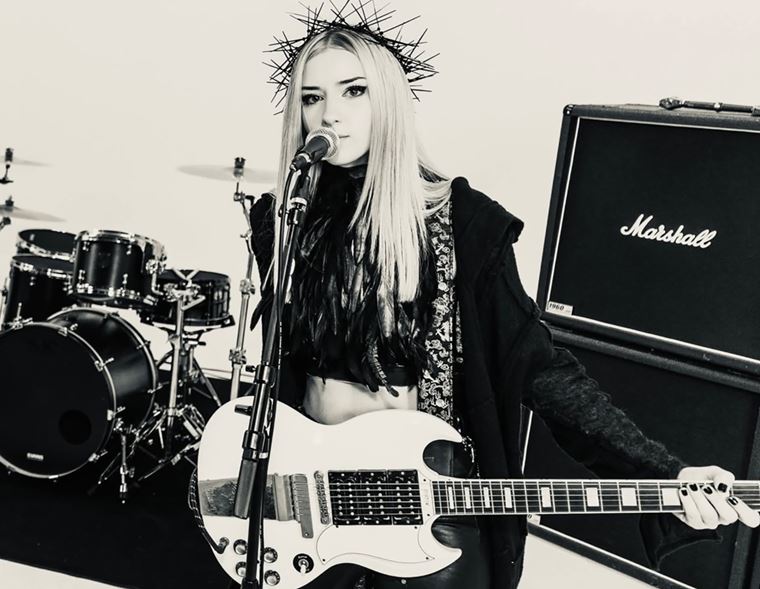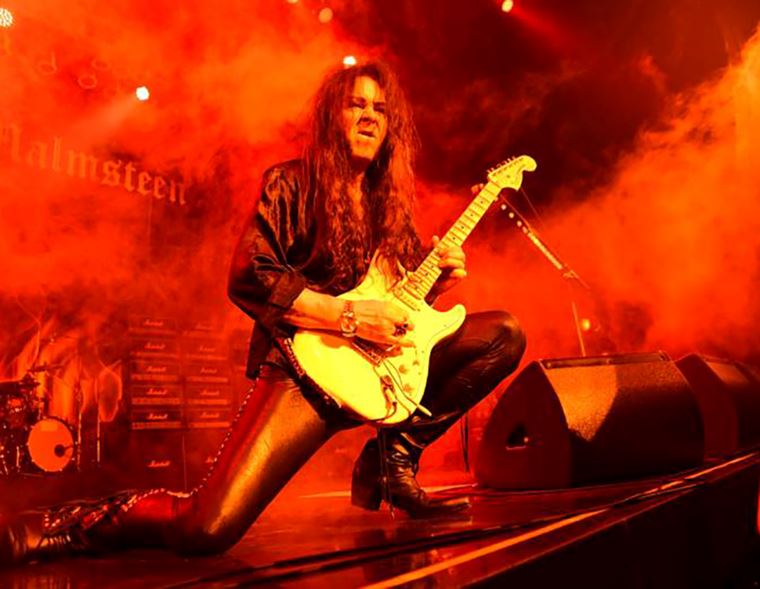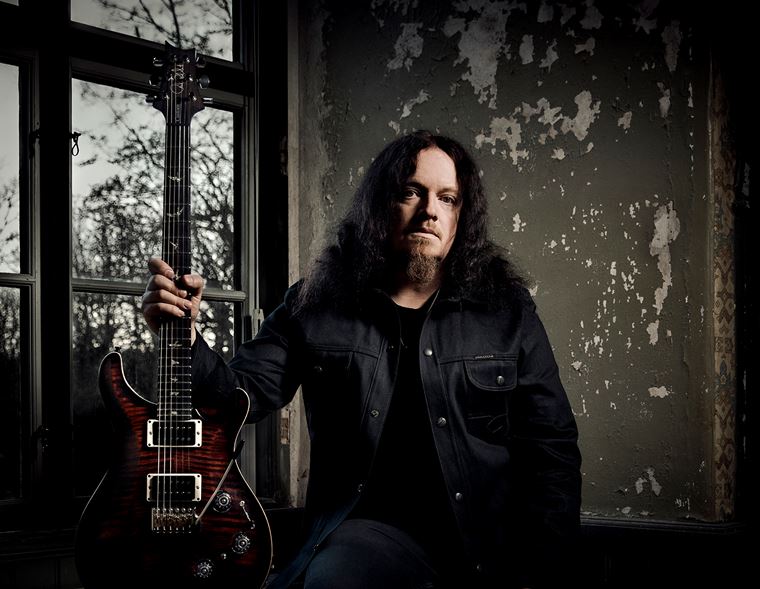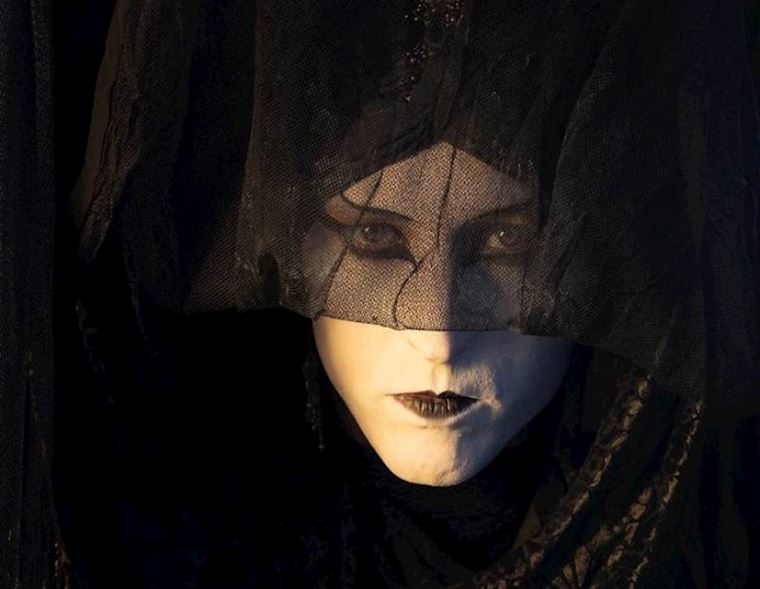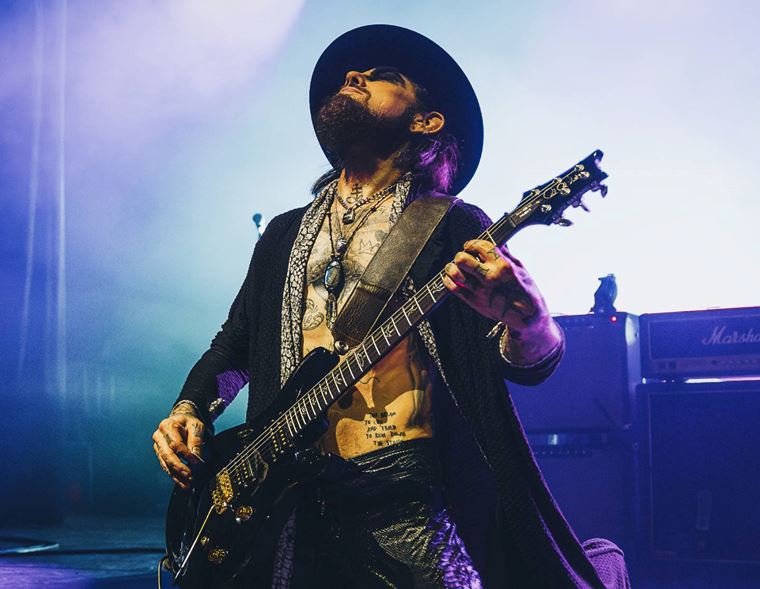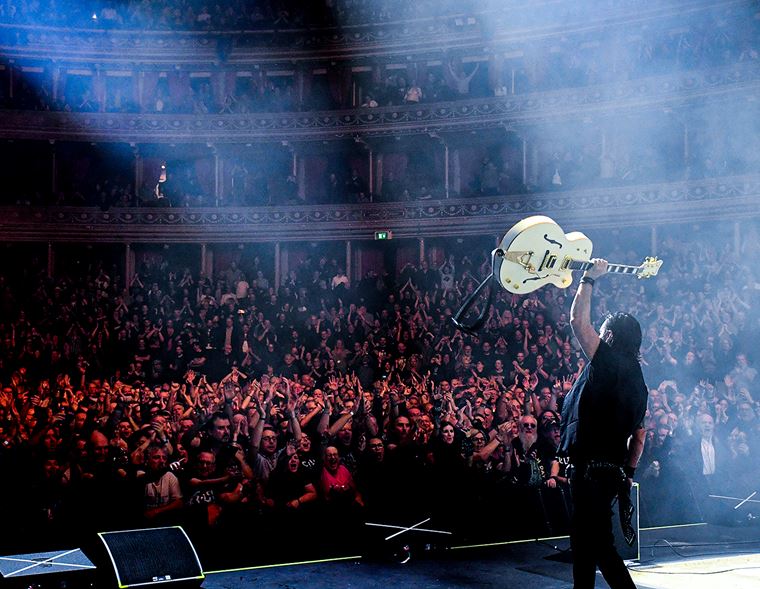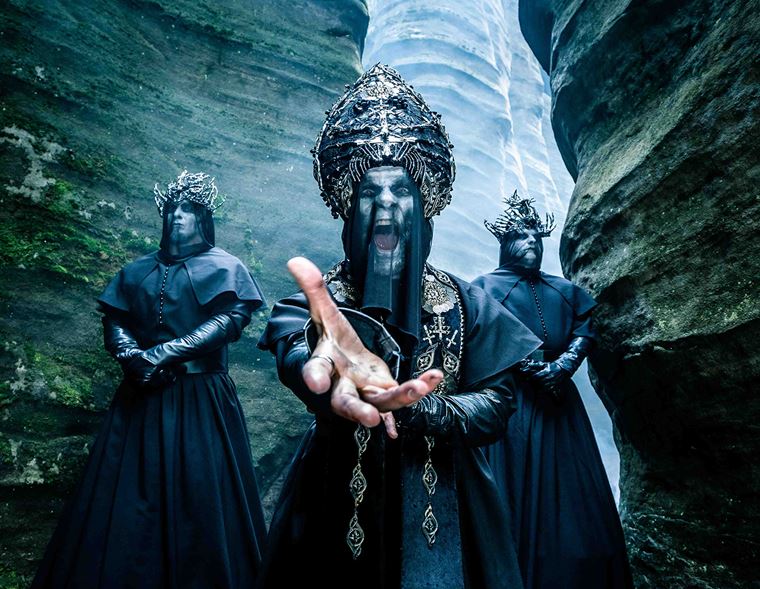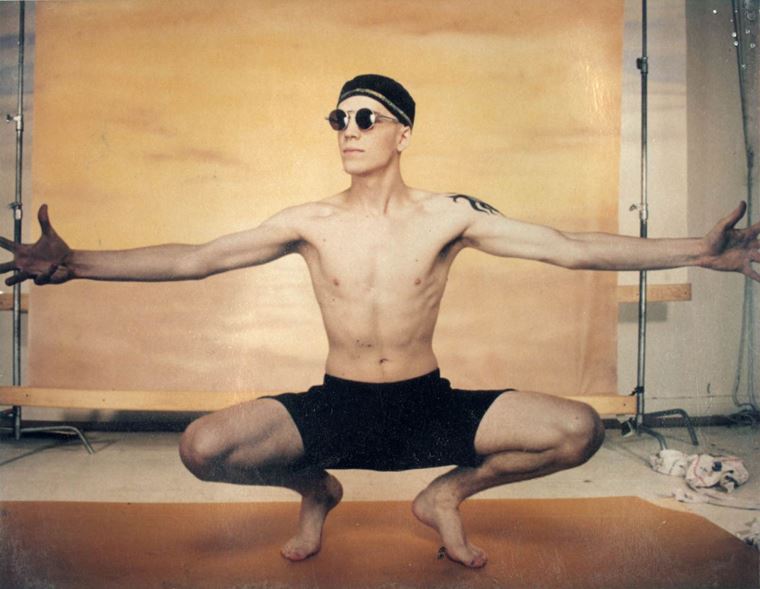Ron Thal is many things. He’s Bumblefoot, the eccentric and highly gifted guitar instrumentalist with the Swiss Cheese guitar. He was one of Guns N Roses’ longest serving guitarists. He was in Sons of Apollo with Billy Sheehan and Mike Portnoy, and he’s the guy with the fretless guitar who plays with the thimble.
Ron is all of those things, and he’s also guitarist in brand new hard rock band Whom Gods Destroy. Their formidable debut Insanium was released last month and it’s a blitzkrieg of stomping riffs, otherworldly textures, pure rock hooks and momentous energy. Ron plays fretless, he plays downtuned, he plays crazy harmonics: he plays his ass off on this record, and I wanted to know more!
You know what else Ron Thal is? He’s a great laugh to talk to. Fun, charismatic and able to strike a balance between giving highly informative answers whilst still keeping a light touch about it all, the man’s a class act. Please continue below to a full transcription of the Zoom call I enjoyed with Ron a couple of weeks ago…
Contents
Ron Thal Interview
Guitarguitar: Ron, I've just been blasting your new record and it sounds absolutely brilliant! So I guess firstly, for the people If you don't get the inside scoop from the press releases, they might be interested in learning about how the band came together?
Ron Thal: Well, it started really with the band Sons of Apollo, which is the band I had that was Mike Portnoy on drums, Billy Sheehan on bass, Derek Sherinian on keys, Jeff Scott Soto on vocals and I was on guitar.
We did two albums and a live album, and we were touring Europe in early 2020 aaaaand (laughs) we got about four shows in before the world shut down. We threw our gear and storage in Germany and ran back to the US! We had all this time on our hands where we could start making a third album, and Derek and I started writing the way we always write which is: one of us sends an idea to the other, and the other builds on that and sends it back. Then I build on that and send it back, and we just keep going, playing ping pong with a song idea until it becomes a song. We started doing that with this unexpected gift of time that we suddenly had, and it turns out that for many reasons, we couldn't do a third Sons of Apollo album.
So, Derek and I just continued writing, and I was doing another thing with a singer, I was doing another band called Art of Anarchy, and with Derek the keyboard player we just kept writing and writing. Then we spoke to our friend Dino, vocalist, and he was like, “Yeah, I’ll do it!” and he joined, and then we spoke to Yaz, an amazing guitar player who's also a great bass player, and he's like, “yeah, I'll do it!” Then Bruno, it was like, “hey, you want to play drums?” “Yeah, I'll do it!” Then we're a band. That's how most bands happen. You just hit up someone you kinda know and say, “hey, want to start a band?” “Okay!”
GG: Haha, cool! So that means that it's yourself and Derek who are kind of like the nucleus when it comes to at least getting the skeletons of the songs together, would that be right?
RT: For this album, yeah. For any future albums, now that the whole band is in place, we could all write together from the ground up. But for this very first one, it started with just me and Derek, which is the way Sons of Apollo was. Derek and I wrote all the music and started the same way. And Dino wrote all the vocals and melodies and all of that for the album.
GG: Okay. I wonder when you're such an obviously, capable and technically amazing guitar player and Derek is the equivalent level of technically amazing keyboard player: I wondered about the process, the back and forth. You were mentioning there about how you build on top of each other's work. Is it difficult to carve space for what you each want to say within a given song?
RT: Not really, we've been doing this for so many years now together that we got good at the ping pong. So, let's say the very first song: In the Name of War. It started off with Derek just having this piano thing (hums the piece) and he said it to me. I loaded it into Cubase and then I hit him back with this low detune fretless with an octaver on it, doing my response to that, which is the next part of the song, and then he's like, “oh cool, cool”. And then he hits back with, “all right, let's make it 4-4 for a verse”. And we just kind of twist that riff.
And then another idea, we're always laying in some kind of Lydian flat 7 or an octatonic type of scale, just a lot of half-hole, half-hole (scalar intervals: Ray) And it's like, all right, let's see if that fits in. We'll leave it there for now and see what happens. Then, okay, let's go back to this bar, go back to that bar. And then that original idea we had, ba-da-da-da-da-da-da, what if we do for the bridge? We'll do some kind of straighter thing.
And then - I do some music for horror movies and stuff like that: you're always using this chromatic, medium idea of just taking a minor and then going to the minor third of it and making that the new root of something that's minor instead of staying in key and it being major.
I'm talking really fast, I'm sorry! It's the coffee. I had some good coffee this morning. So D minor to F minor of the same idea.
(Ron decides to grab his guitar in order to demonstrate what he’s talking about. Ron being Ron, his guitar is a double neck Vigier with a fretless neck and an awesome swirl/splatter finish, naturally.)
For the bridge, I do another variation of that theme, then open it up a little solo thing. I'm just expanding on the chords and getting all snazzy jazzy with it (laughs) and just going into the 9ths. And then just getting silly and using my thimble thing. You know my thimble thing?
GG: Haha, yes! I do!
Ron’s Thimble
RT: When I ran out of frets and I wanted to keep going with notes, what I would do is, instead of pressing the string against the metal fret, I’d press this mobile fret, a metal cap on our finger, a thimble against the string. I use it to get higher notes above the fretboard and I also use it to shorten the length of the string from the other direction, so that is almost like stepping in front of the bridge and acting as a mobile bridge. And it changes the centre of the string: instead of being at the 12th fret, it's going to be down here, which means that all your frets get to be de-intonated, they're going to be out of place and sharper. So it makes all your notes actually higher that you're fretting down when you hold this in whatever specific spot you want to hold it to.
GG:It’s such an ingenious thing to do! Ron, did you come across that by accident whilst messing around or was that something where you had this idea that you wanted to develop and it ended up like that?
RT: Well, I knew what I wanted to do. I just had to figure out the most efficient way of doing it, and just having this metal fingertip was the best way to do it.
GG: Okay, wow, I haven't seen you do that specific thing with the thimble: whenever I've watched you, I always just thought that you were using it as kind of almost like a slide for really high-pitched kind of noises and so on.
RT: Yeah, I mean, you can definitely notice it in all the R2D2 shit, like all that weird sounding stuff, but I use it also, you can use it to extend a bend farther. Let's say you bend a whole step.
You take this, and as you bend, you shorten the length of string, which makes your note higher (Ron uses the thimble on his right hand to move towards his left hand fretting fingers, thereby shortening the string’s ‘sounding’ length - Ray)
GG: It’s like a Whammy pedal, almost. That’s so cool!
RT: So, that's my wacky weirdo shit that I do.
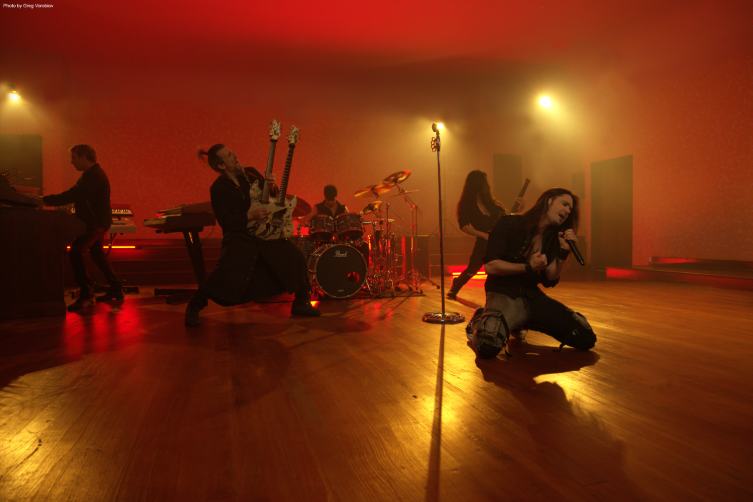
(Photo: Greg Vorobiov)
Time Signatures
GG: Oh, but that's part of the appeal really isn't it, the wacky weirdo shit! I can't wait to talk about the fretless guitar, but before we get to that, I love to talk about time signatures.
Obviously, it's not unusual anymore for players that are, you know, prog-minded and play modern, contemporary rock and metal to be playing in unusual time signatures, but I often find when I'm talking to musicians who practise in that stuff, you get two schools: you have the people who absolutely count and then you have the other people who don't count at all and everything is ‘one’ and it's just like a matter of, you know, they learn the riff or passage and then it’s a matter of how many times they play that part. Which side of that do you tend to sit on, yourself?
RT: Well, to really have shit down, you gotta be able to do it from all angles. You should be counting, you should be ‘feel’ for sure. Yeah, it's a little bit of everything, and subdividing is very important. you're doing some weird time signatures, subdivide it.
Don't think of 11 as 11, think of it as wherever the punch points are. That could be ‘1-2-3, 1-2-3, 1-2-3, 1-2. It could be something like that. So think of it as 3, 3, 3, 2. Subdivide into chunks that you can work with. Also, that will help with the feel.
If you're counting 11,like 1,2,3,4,5,6,7,8,9,10,10, that’s probably not how the music is. There's going to be something else going on in there. So you want to acknowledge those internally.
GG: Yeah, yeah. So it's less of a number and more like you find the pulse and it's a matter of how much one of the pulses might be shorter or longer.
RT: Yeah. You have the flow and then you have that one broken piece at the end.
"Doing the big giant shows where the audience is 50 feet away, I felt very disconnected, and I found that I enjoyed the smaller shows a lot more"
GG: Exactly, exactly.
RT: (laughs) That’s how a lot of weird time stuff is.
GG: Talking about riffs, there's a bunch of fantastic riffs on the record. I was wondering: the Insanium riff itself, is that an example of you starting that song and you then sent it across? Did the song come around based on the riff first?
RT: Yeah, I just came up with a riff! It's just chirping the third harmonic and the flat seven before it. Way up on the strings. I’m just holding a C note on a drop B.
GG: I wondered, when I listened to that riff, whether it might have been your left hand, you know, like the sort of harmonics you're just gonna tap but it's all pinch stuff.
RT: Yeah, cause it's off a fretted note.
Fretless Guitar
GG: That’s so good, it sounds amazing! Obviously the fretless guitar is one of your trademarks and I always love the sound of it and every time I've tried a fretless guitar - and I did get the frets taken out of an old guitar of mine way back in the day - it's an extremely hard thing to do. Particularly when you don't have any guide frets for it, as yours don’t.
The question is two parts and I suppose the main part would be: is it easier to find or to establish a unique vocabulary on it because it's already quite a remove from a normal guitar; but then did you really have to work to get your accuracy?
RT: Yes, yes to both. (laughs) The first time I tried one, it was at NAMM in 1998. I went there with Vigier guitars, they're the crazy Frenchmen that make these things, and I didn't even know they were making fretless guitars. I still remember the look on Patrice Vigier's face when I was like, “why didn't you tell me about these? Why didn't you tell me you guys make these?” And he just stared up at the sky and let out this frustrating sigh! Just like, “because in the past 18 years this company has been in business, we have sold four of them. Nobody wants these”. That’s what he said! “Nobody wants them. Nobody wants to play them”.
I’m like, “I DO!”. He gave me one to take home and immediately I started writing with it. It changes the way you write, because there's certain riffs you can do on a fretless that wouldn't work on a fretted, just the dragging of things.
It makes you write sleazier riffs, definitely (laughs). And you just practice. The first five minutes I played one, it was horrifying. I didn't know if I would ever be able to move forward with it. But after an hour, everything started coming together and all these senses started to align: the combination of sight, like what you see and what you hear and just a lot of prayers (laughs), and it all comes together and you start figuring out how to reshape chords. It gets there.
GG: You were talking about a low B on that one (Ron is playing cool stuff on the twin neck Vigier throughout the conversation - Ray). Do you have that strung sort of like the bottom six strings of a seven string or like a baritone?
RT: I have it weird. It's like a seven string that skips the sixth string. And then on this neck (the fretted neck), I keep a drop D.
GG: Ah, got it. And I wonder: with the threatless guitar, presumably, it's kind of like a cello where your finger has to meet the note where the fret itself would be, rather than, you know, when we're playing on a normal guitar, we're just in between them. So, is that the case? And does that kind of effect when you go between them, the sort of the difference between being in between a fret and being on a fret?
RT: Oh yeah. (laughs) Yeah, when you're playing a normal guitar, you're just sticking your finger anywhere where you can press the string against the fret. The fretless, you have to be the fret, so you have to be right on the mark, you have to be exact. If you put them where you would normally put things, (Ron plays a really out of tune chord). You have to really get on there, so it forces you to be more accurate with it. Or just practise the accuracy.
GG: Sure. And do you find after you've got that accuracy - you know, you've played that D minor on the fretless perfectly - then you go back to your fretted guitars, does it change how your hands feel when the frets are back there again, or does it not seem to matter?
RT: It's like learning a new language where you could just switch languages. When you switch to the fretted neck, you're back to the fretted language and you put your fingers behind the frets automatically and you don't think about it.
GG: Nice analogy! So what are the string gauges for that particular set up?
RT: Okay, I'm using 9 to 46 on the fretted and I'm using 12 to 60 on the fretless.
GG: Right, and they standard sort of roundwound strings on the fretless? Or do you have to go with flatwound?
RT: Oh, no, I just went with D’Addario NYXL’s on both, normal wound strings Yeah, with a plain G not a wound G. They’re a good strong gauge!
GG: I suppose the whole point is that you don't have to bend, because if you want to bend, you just slide.
RT: Exactly! And you can slide further than any normal bend can travel. You don’t have to worry about snapping a string.
"If you're stuck in a box, instead of trying to jump into another box and start over with that, just try pushing on the edges of the box and expanding the box"
Guitar Tones
GG: So true! That's awesome. So I'm thinking about the amazing, excellent tones that you’ve got on the records. Was that guitar part of your armoury? and let's just discuss the gear that was on the record, if we may?
RT: It's pretty much all this guitar, and this guitar has - on both necks - a DiMarzio Tone Zone by the bridge and a DiMarzio Chopper by the neck. They have a five-way toggle where it's bridge pickup - humbucker, then bridge pickup - single coil, bridge and neck together, bridge and neck out of phase and then just the neck pickup.
From there I go into a Line-6 Helix and all my tones are from that.
GG: Wow! Did you have a particular modulus that you were relying on for the crunch?
RT: The Engl clone is my main one and what I usually do is I have a second amp, and I started doing this years ago with the Line-6 Vetta amp where I mixed two amps together, because one sort of fills holes that the other has. You put the two together and very often I have one amp as the main one another one that just sort of blends in just enough to round out the mids and smooth things out.
So the Engl sounding amp is the main one, and then I think I was using one of Line-6 amps to blend in. For clean or punchier sounds I usually use two types of Fender clones.
That's pretty much it. I send them to 4x12 cabinets where either I'll use a ribbon mic for something that's really smooth or just keep a biting 57 on it, and what I like to do I have this weird setup on the Helix that I do. Strange routing, where I have all the pre-affects -all your stomp boxes - before the amp there's a distortion, wah, octave pedal, all those kinds of things. I have them, then it splits into the two amps, which each go into their own cabinet, and then they sum back together, and they go into another IR, at 50% of a different type of cabinet.
So, it's almost like I'm running half through a cabinet, and what it does, I lose a little bit of highs - which I make up for with an EQ after it - but it really smooths out the sound and gets rid of that digital grit that you find on a lot of the stuff. It makes it less brittle, white noise on top, and it sounds more like just air moving in the room.
GG: Wow!
RT: That's my little trick that I do.
GG: Right, right, that's a really good trick. So you're doing an additional IR, so like after the... using the amps and cabs that are in the Helix, and then an extra IR?
RT: Yeah.
GG: Awesome!
RT: It splits two: amp & cab 1, amp & cab 2: they come back together into another IR of a cab and then everything else.
GG: So good, so good. It's really interesting that you mentioned the angle. I've found through generations of Line-6 equipment - because I've been familiar with them for a long time - that whenever I want a really good Rectifier sounds for example, I always get it off the Engl with a wee bit of the … is it the line-6 Elektrik with a 'k' or something like that? Like, if you want the really good Fender sound, you go for the Dr-Z amp model, haha! Sometimes the sound you want doesn’t have the name you want.
RT: (pause) Yeah. (laughs)
GG: Haha! The sounds are there, but the names aren’t quite correct.
RT: You're absolutely right! I have very little to add! The Engl is like a killer amp clone. Inside the Line-6 there's a lot of good ones. I'm forgetting the names of them but there's a lot of really good heavy ones in there. Like, if you're looking for just a gritty Marshall, you could find that ten times over; if you're looking for that driven Rectifier sound, you could find that in there easily.
GG: Yeah. It just might not be called that, but it’ll be in there!
RT: Yeah, they come up with some alternate name. Instead of ‘rectifier’, it'll be like ‘rectum fryer’ or something like that! (laughs) You’ll know what it is that they're cloning without flat out saying.
GG: Exactly, That's how they get around it. So yeah, in that case, were all of your effects and so on - anything that wasn't coming from your technique - was that ‘in the box’ as it were with the Helix?
RT: Everything except for one effect, which is the Digitech Freqout pedal, which simulates holding your guitar against an amp and getting your feedback, only it's controllable. You can set how quickly or how long it takes to fade in, how loud it is compared to your main signal. So I was using that set to a momentary switch so that I could really just control when it happens. So I use that on a few of the solos and on some solo stuff.
I have a solo album of all crazy instrumental music that has been done since June and it has been so busy with Whom Gods Destroy and the other Art of Anarchy band that I just had to put that to the side and focus on these bands, and just get everything out and done. Now this month I'm going to bust my ass and move forward with everything I need to do to release my solo album.
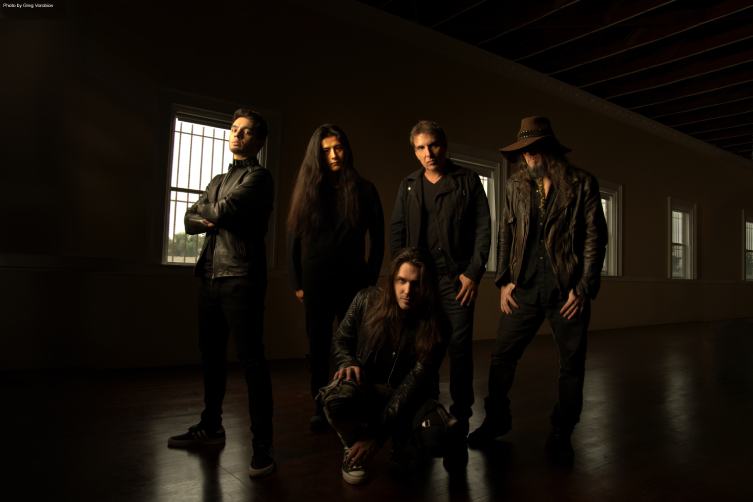
(Photo: Greg Vorobiov)
New Bumblefoot Solo Record
GG: Oh that's exciting! so that's another thing? This Whom Gods Destroy album is just new and now you're going to be bringing us an instrumental solo record as well! Is that something that you can talk about just now or would you rather we keep quiet about it?
RT: Oh, I can talk about it a bit. I mean there's some things I want to say, like there's a few guests on there. I didn't have many, only like three guitar guests showed up on there. I don't want to say who yet until the album is out. But good stuff there!
Anytime I make an instrumental album, I have no direction whatsoever. I write whatever I feel at that moment, whatever inspires me and it's always something different. And in the end, the album sounds like a bunch of songs from different planets where one sounds almost like country music on the fretless.
Just a bunch of…(plays a country lick on his fretless) And then another one is all just kind of Whom Gods Destroy-ish. Then one ends up being like a southern rock thing. It just works that way, just having fun with the guitar.
GG: That's it! You know, you're such a colourful player anyway so it makes sense that your music should have quite a lot of different genres as a matter of course.
RT: My brain is all over the damn place, so the music ends up being all over the damn place.
GG: (laughs) And why not? Nobody goes to Bumblefoot for bland, you know what I mean? Don't worry about that! Now this seems like such a dumb thing to say but your guitar solos are really incredible on this record. There was one in particular, The Decision. I think it sounds like you've got a kill switch maybe? You can correct me on that, but I was wondering, because it's quite an extended solo and there are occasions on the record where I'm not 100% sure whether it's you or Derek, but I'm pretty sure this one is all guitar right? I'm thinking about how you go about constructing that type of extended statement for a guitar.
RT: There's space in there and it's in there. I Just come up with a melody, and usually it'll just be, you know, I just hit record, come up with something. If I like it, keep it: if I don't, I do it again, different approach or just keep it up to a point and then say, ah, it sucks from there, let me take it from there and just keep going. (laughs)
GG: It’s working well! So, total tangent, but I wonder what guitar pick you’re currently using?
RT: Whichever one I can find, because I'm terrible with guitar picks and I'm always… I never have them. Like, I just came back from a tour and every night I had to borrow a guitar pick from the drum tech! Thank God he had guitar picks! So, just whatever is lying around. I guess mostly I just use normal sized, just these things.
GG: Like, is it like Tortex or something?
RT: It's kind of just normal, yeah, just whatever I can get my hands on. Whatever I can borrow from somebody!
GG: You don't have a preference for thick ones or skinny ones or anything like that?
RT: I found that going to lighter picks, I had a brighter tone. It was very noticeable, just the way I picked the thinner pick you can hear a much brighter sound. So I started using thinner like just, you know, real medium gauge, like I guess like 0.60mm, something like that.
But then every once in a while someone will hand me when I borrow a pick like here's a 1.2mm and it's like ‘oh, this is cool!’ But yeah, usually if I'm gonna go make up my own picks - which I'm about two years late on doing - that um I think I would go with the thinners, probably like 0.60mm.
GG: Yeah, so it doesn't actually bother you,in terms of… I'm thinking… a lot of your playing is so precise, and a lot of it is fast. Some people can get really hung up on how quickly the pic will sort of like ‘return’. Or even muting techniques and stuff, but none of that really bothers you, right?
RT: Nah, if it’s a thicker pick you don't push as hard, if it’s a thinner pick you push a little harder! (laughs)
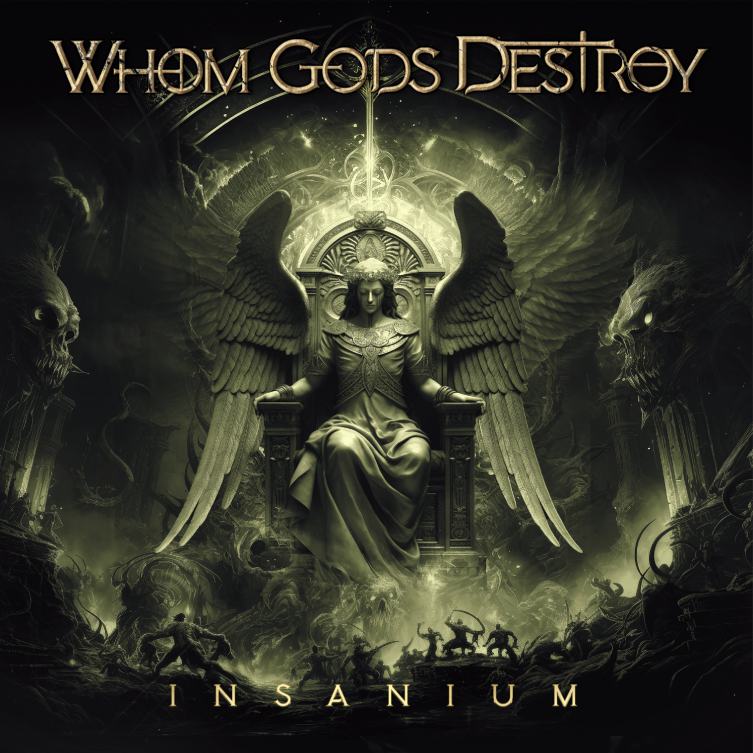
Expression & Playing Tips
GG: Fair enough! So, being that obviously you're a person who has a double neck Vigier with the thimble, with the fretless, with the a Swiss cheese guitar: you're obviously someone who values originality and individuality of expression, right? And you're also that comes to you you're playing Which is really unorthodox and really like eccentric sounding, but in a really nice way.
So my question is, do you have any easy quick hacks for all our guitar players to sort of break out of their usual motions? You know, how everybody goes through the same motions that their hands will kind of do for them?
RT: Stuck in the rut.
GG: Yeah, any ways to get out of that?
RT: Well, usually when someone tells me they're stuck in the rut, usually the rut that they're in is just playing the common pentatonic. So one quick thing is, if you're stuck in a box, instead of trying to jump into another box and start over with that, try just pushing on the edges of the box and expanding the box.
So here's one side of the box, the first finger, on the twelfth fret of every string. Instead, use your second finger and put a note behind it (play the fret that’s next to it, down the neck - Ray). It's a very simple thing that you can do without having to start over with how you approach your playing. Just taking what you already do and just stepping a little bit to one side with it.
"That's how most bands happen: you just hit up someone you kinda know and say, 'Hey, you want to start a band?' 'Okay!'"
So that's an easy way to start getting out of that box or at least: I shouldn't say start getting out of the box; at least a way of expanding what you're doing. That's really what you want to do.
So that is my quickest suggestion that I can make without getting into a whole bunch of theory shit and all this other stuff, just as far as just playing on the neck when you're going to a jam and you're in that position and you're getting bored with your own playing and you feel like you're not really thinking anymore as you play at the note behind. Or note above, or both.
GG: That's brilliant. That's so good.
RT: Just a hair more interesting. And it’s not something to overuse, it's just something to throw in for a moment.
GG: That's a good point. You don't want to make that the way you play because then it loses its magic.
RT: Yeah. And being that all the notes that you're throwing in are the ‘outside’ notes. You may not want to play too outside all the time.
GG: Yeah. You have to resolve it. You have to tell the end of the story properly, don't you?
RT: Treat those notes like a bridge to the right notes.
Guns n' Roses
GG: Yeah. That's great. Just before we round things off, Ron: it's a big general big question, but obviously you spent years playing with Guns n' Roses. I just wondered, as a guitarist - as a musician - what was your biggest take away from being in such a high profile gig for such a long time? Like a sort of ‘before and after’ situation for you?
RT: (A long pause for thought) I would say the most surprising thing was after headlining giant festivals and having so many different types of shows - and even with them we would do a surprise acoustic show somewhere for like 100 people - I found that the big giant shows where the audience is 50 feet away and you're just this small figure on a giant stage…I felt very disconnected doing those and found that I enjoyed the smaller shows a lot more.
You always think, your dream as a musician was of being on this big stage and playing an arena, playing a stadium, playing all the stuff but the truth is, you feel more like a musician - and you're more present and more part of what's going on - when you can interact with the audience individually.
I enjoy doing a clinic for 20 people more than playing a huge stage for 20,000 because on the 20,000 you feel two-dimensional, you feel like you're not part of it all in a way. You feel distant from it. It's almost the same as when William Shatner went into space
really realise like “you know what, everything is back back down there on Earth”. It's the same kind of feeling. It's like you dream of going to space and then you realise, wow, this kind of empty up here. Oh, wow.
And I am not the only one who has felt that way. I've spoken to a lot of people that had the same experience that have played big and small. And, you know, after Guns, like I still played Hellfest with Sons of Apollo, I've done solo stuff where I've played big festivals in Thailand and wherever. I just find that I feel more like I'm there and part of everything and more real when you can interact with the people that are in the room with you.You're sharing the experience more.
That’s the one thing that surprised me, and it tends to surprise everyone when they first hit those big stages.
It's kind of like going like William Shatner in space: it's like, I miss the people!
GG: Well, that's very insightful. Yeah, that's incredible. Good answer. That would be, that might be a lovely note to end on, but see just for a laugh - because I know that you're a mad hot sauce fan - What is the key ingredient - the best ingredient - for an excellent hot sauce? Tell me!
RT: (Straight away) Pain! (laughs) And love. But mostly pain. There's a lot though, you know? Vinegar is good but it could get very biting against the peppers. If you can use a lot of vinegar you want to sweeten it up to balance it out. So either using honey or brown sugar or something like that helps a lot, balancing fruit. And when you're using it, you might have to go with a stronger, more harsh intense fruit, because once you cook it gets very mellow. Blueberries may not cut through as much as you want them to, so you might have to use sour cherries. But it’s all about balancing all the flavours…with pain!
Now, that’s a bunch of advice that should see your playing AND your barbecues right through the summer! Hopefully this interview gets enough of Ron’s personality across, but sadly you can’t hear the cool way he talks (he should have his own podcast at least) and the little peppering of guitar playing he sprinkled throughout our conversation.
What a great guy to talk to, and what an astounding musician. Check out Whom Gods Destroy wherever you get your music, and head over to the official Ron Thal website for more on the great man himself.
Thanks for reading this exclusive guitarguitar interview! I’m willing to bet that if you enjoyed this one, you’ll love watching and reading some others, like this NEW Steve Vai interview, this Joe Satriani Interview and this Robin Finck interview. I’ll be back with more soon. Have a good one!

